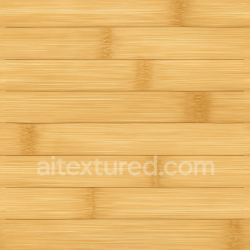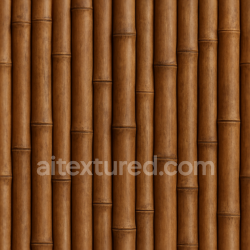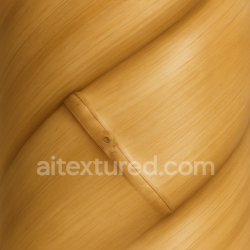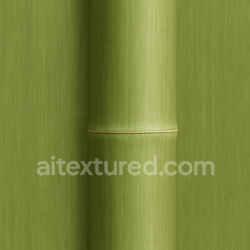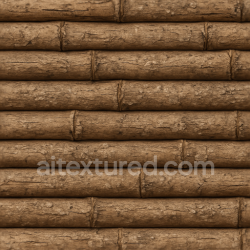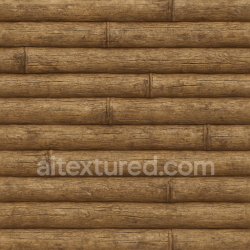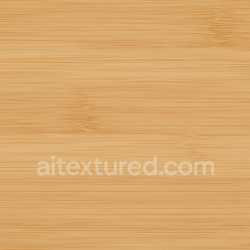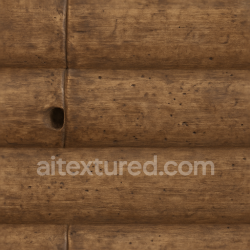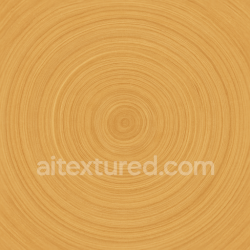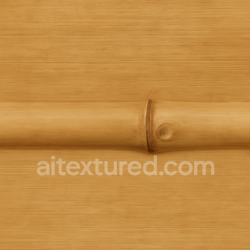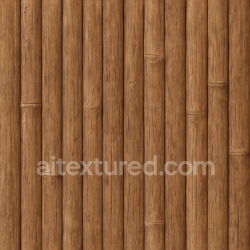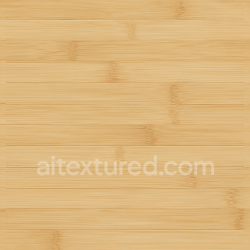Seamless Footprints PBR Textures Enhancing Realistic Ground Surfaces
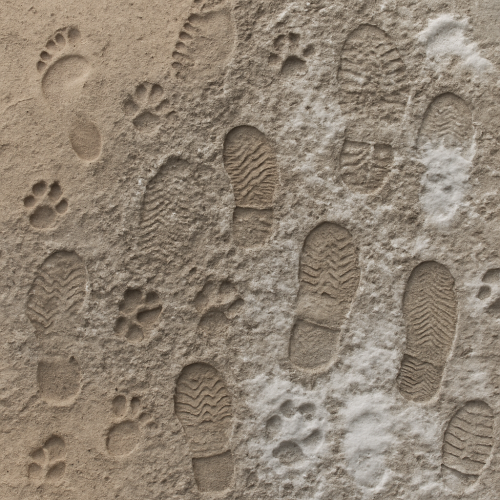
Capturing footprints for physically based rendering (PBR) textures demands a meticulous approach to accurately transfer the subtle interplay of surface geometry, reflectance, and environmental context into digital assets. The inherent complexity of footprints—shaped by substrate consistency, deformation depth, and ambient lighting—requires that acquisition techniques address both geometric fidelity and material characterization to ensure realistic integration in real-time engines such as Unreal Engine or offline platforms like Blender’s Cycles renderer.
High-resolution scanning and photogrammetry have emerged as the principal methodologies for acquiring footprint data. Both approaches aim to capture surface geometry with sufficient spatial detail to generate precise normal and height maps, while simultaneously enabling the extraction of albedo, roughness, ambient occlusion (AO), and other PBR channels. However, the distinct nature of various substrates—mud, sand, snow, rock—introduces unique challenges for data fidelity and post-processing.
When scanning footprints embedded in soft, deformable media such as mud or wet sand, the primary consideration is preserving the fine-scale displacement caused by the foot's pressure without inducing surface damage or alteration. Structured light scanners or laser scanners with sub-millimeter resolution are ideal, as they can resolve minute undulations and micro-variations in surface depth essential for producing accurate height and normal maps. Prior to scanning, it is crucial to stabilize the footprint, often by employing a transparent fixative spray or by casting with dental stone or silicone rubber to create a physical replica. This replica can then be scanned under controlled lighting conditions, minimizing environmental variability that could corrupt albedo capture.
Photogrammetry offers a complementary technique, leveraging overlapping high-resolution photographs to triangulate 3D geometry. For footprints in transient substrates like snow or wet sand, rapid acquisition is critical to prevent deformation from environmental factors. Capturing images at multiple angles with consistent exposure and white balance facilitates robust photogrammetric reconstruction. It’s imperative to include scale references and calibration targets within the scene to ensure dimensional accuracy and to enable precise camera parameter estimation during reconstruction. Additionally, the use of polarizing filters can reduce specular highlights, which often interfere with texture extraction and can skew the perceived roughness values.
In the context of harder substrates such as rock or dried mud, surface reflectance is often more complex due to micro-fissures and particulate matter within the footprint depression. Here, reflectance transformation imaging (RTI) can enhance the capture of surface normals by varying light direction while maintaining a fixed camera position, thereby enriching normal map fidelity beyond what is achievable with a single lighting condition. This method is particularly effective for generating detailed ambient occlusion maps, as it accentuates shadowing within crevices that contribute to realistic shading.
Once geometry acquisition is complete, the extraction of PBR texture maps must be approached with a workflow that preserves physical correctness. Albedo maps should be captured under diffuse lighting conditions to minimize shadows and specular contamination. For substrates like wet mud or snow, it is essential to separate intrinsic coloration from surface wetness, typically by combining diffuse and specular passes or employing spectral analysis to decompose reflectance components. In software such as Blender, the generated albedo can be refined by removing shadows and highlights via frequency separation techniques or by referencing samples from multiple lighting conditions.
Roughness maps, which encode microsurface variation affecting specular spread, can be derived from close-up photography or inferred from the substrate type and moisture content. For instance, wet footprints exhibit lower roughness values due to fluid films, whereas dry, cracked mud surfaces possess higher roughness. When scanning data lacks direct roughness information, procedural texturing informed by surface micro-variations captured in the normal or height maps can be used to approximate roughness heterogeneity, enhancing realistic light interaction.
Normal map generation benefits from high-resolution displacement data obtained from scans or photogrammetric point clouds. Accurate normal maps ensure that lighting calculations in PBR shading respond correctly to small-scale indentations and protrusions characteristic of footprint topology. Height maps derived from displacement data further support parallax occlusion mapping or tessellation in engines like Unreal Engine, allowing dynamic surface detail re-creation without excessive geometry cost.
Ambient occlusion maps, critical for simulating self-shadowing within footprint cavities, can be baked from high-poly geometry or generated from the scanned mesh using ray-tracing algorithms. Proper calibration of occlusion intensity is vital to avoid over-darkening, which can flatten the appearance or obscure subtle details. In Blender’s texture baking workflow, AO maps should be baked with matched scene scale and light parameters to maintain consistency with other maps.
Metallic maps are generally non-applicable for natural footprints unless foreign materials (e.g., embedded metallic debris) are present. However, a metallic channel may be used to mask areas with differing reflectance properties if required by the shader setup.
Tiling and micro-variation represent additional considerations in authoring footprints textures for PBR workflows. Footprints are inherently unique and non-repetitive; thus, creating seamless tiling textures requires careful capture of adjacent surface areas around the footprint to avoid abrupt transitions. Techniques such as texture projection or cloning can be employed to extend footprints into tileable patches, but must be balanced against preserving the natural randomness vital for believability. Incorporating micro-variation through noise overlays or blending multiple footprint scans can break uniformity, mitigating the “stamped” look common in tiling textures.
Calibration between scan data and texture maps is paramount. Scale normalization ensures that physical dimensions correspond accurately to in-engine units, allowing for consistent interaction with lighting and physics systems. Utilizing ground control points during photogrammetry or verifying scan dimensions against known references can prevent scale discrepancies that degrade realism. Additionally, color calibration using standardized color charts during photography helps maintain albedo accuracy, critical for believable material response under varied lighting.
Optimization is an essential final step in preparing footprint PBR textures. High-resolution scans often produce dense meshes and large texture maps; reducing polygon counts through retopology or normal map baking preserves detail while enhancing performance. Texture maps should be downsampled judiciously, maintaining sufficient resolution to retain detail visible at intended camera distances. Mipmapping strategies within engines like Unreal Engine further improve performance and reduce aliasing artifacts.
In Unreal Engine, footprint textures can be integrated into material instances using layered blend nodes to combine albedo, roughness, normal, and AO maps, enabling dynamic adjustment of parameters such as wetness or dirt accumulation. Tessellation or displacement mapping can utilize height maps to recreate the physical indentation of footprints on terrain meshes, enhancing visual depth. Blender’s shader editor facilitates similar workflows, allowing procedural blending of scanned textures with noise or dirt masks to simulate natural wear or environmental effects.
In summary, acquiring PBR footprints textures involves a multi-faceted process combining high-fidelity geometry capture and precise material property extraction. Attention to substrate-specific challenges, calibration, and optimization ensures that resulting textures convey the nuanced interplay of form and reflectance essential for realistic digital representation. By integrating these acquisition techniques into established PBR workflows, artists can achieve footprints that convincingly respond to lighting and environment, enriching the authenticity of natural scenes.
Creating convincing footprint textures in physically based rendering (PBR) workflows demands a nuanced integration of procedural and photographic techniques. This hybrid approach leverages the best of both worlds: the organic complexity and authenticity of photographic sources with the flexibility and control of procedural generation. The goal is not simply to replicate a static footprint but to develop a versatile, tileable, and physically plausible material set that can be adapted dynamically across diverse environments, scales, and lighting conditions.
The foundational step typically involves acquiring high-resolution photographic references of footprints, ideally captured under controlled lighting to minimize shadows and specular highlights that complicate texture extraction. These photographs provide the albedo or base color information, preserving the subtle color variations inherent in soil, sand, mud, or snow substrates. Careful calibration of these images is crucial; utilizing color targets and neutral gray cards during capture allows for consistent color correction and white balancing. This ensures that the albedo maps remain physically accurate and compatible with subsequent PBR channels.
Once photographed, the images require meticulous processing to isolate the footprint from the surrounding terrain. This often involves manual masking or employing machine learning–assisted segmentation to delineate the footprint’s outline and internal details such as tread patterns, depressions, and displaced material. This mask serves multiple purposes: it guides procedural generation, defines alpha channels for blending, and assists in creating height and ambient occlusion maps.
Parallel to photographic acquisition, procedural generation is employed to synthesize micro-variation and environmental wear effects that are difficult to capture photographically, especially over large areas or in varying conditions. Procedural noise and fractal patterns can simulate erosion, sediment displacement, and surface roughness changes resulting from weathering, wind, or water flow. These procedural layers are parameterized, allowing artists to adjust intensity, scale, and distribution dynamically to reflect different phases of footprint degradation—from fresh and sharply defined impressions to faint, partially eroded traces.
Integrating these procedural effects into the PBR texture stack involves generating complementary grayscale maps for roughness, height, and ambient occlusion. The roughness map, for example, can encode the contrast between compacted footprint interiors and the looser surrounding soil, affecting specular response and light scattering in the rendering engine. Height maps derived from both photographic displacement cues and procedural erosion patterns enable tessellation or parallax effects in engines like Unreal Engine or Blender’s Eevee and Cycles renderers. These height details must be carefully calibrated to maintain physical plausibility; exaggerated displacement risks breaking silhouette integrity or causing shading artifacts, especially when combined with normal maps.
Normal maps represent another critical channel in footprint PBR workflows. While tangent space normals can be baked from high-resolution photogrammetric scans or generated from height maps, procedural detail can be layered to introduce subtle micro-bumps and granular texture. This layering enhances the tactile realism of footprints under varying light angles, contributing to a convincing sense of depth and material heterogeneity. Combining photographic normal data with noise-driven procedural normals requires careful blending to avoid unnatural patterns or repetition, and often benefits from using detail masks and multi-scale normal blending techniques.
Ambient occlusion (AO) maps add depth to the footprint by simulating how ambient light is occluded in crevices and depressions. Photographic AO can be approximated from the footprint’s shadowing in the capture images but is more often generated via baking from high-poly models or procedural algorithms that simulate soil compaction and particle displacement. Procedural AO layers capturing fine particulate buildup or moisture pooling within footprint cavities further enrich the realism and can be toggled or adjusted depending on environmental context.
Metallic maps are typically less relevant in natural footprint textures unless the footprint occurs on substrates containing metallic particles or is contaminated with metallic debris. However, procedural masks can be applied selectively to introduce subtle metallic reflections if appropriate, for example, in footprints on wet gravel or industrial grounds. This requires careful physical calibration to maintain the energy-conserving nature of PBR materials.
Tiling and micro-variation present unique challenges in footprint textures. Footprints are inherently non-repetitive and localized, so creating tileable textures with believable randomness demands advanced procedural layering and blending strategies. One effective technique is using a base tileable ground texture derived from photographic or procedural sources, then overlaying unique footprint masks combined with procedural erosion and dirt accumulation layers. These overlays can be blended using vertex painting or runtime masks in Unreal Engine’s material editor or Blender’s shader nodes, allowing multiple footprint instances to coexist without obvious repetition. Micro-variation within these layers—achieved through multi-octave noise functions, stochastic detail placement, or procedural grunge maps—breaks uniformity and improves the perceived scale and authenticity of the footprints.
Calibration between channels is paramount. For example, the height map displacement must correlate with normal map detail to avoid shading inconsistencies. Similarly, roughness values should reflect the physical properties implied by the albedo and height channels—damp, compacted soil inside the footprint will appear smoother and less reflective than loose, granular soil. Iterative testing in target engines ensures that the material responds predictably under different lighting and environmental setups. Unreal Engine’s physically based material system benefits from real-time visualization of roughness, metallic, and normal channels, allowing rapid iteration. Blender’s Cycles renderer provides accurate path-traced previews, facilitating subtle adjustments in micro-detail and displacement before baking final maps.
Optimization is a practical concern, particularly when deploying footprint textures across large terrain systems or real-time applications. Combining procedural techniques with high-resolution photographic data enables detail to be layered adaptively: low-resolution base textures cover broad areas, while high-frequency procedural detail is added through shader effects or detail masks at runtime. This approach reduces texture memory footprint and draw calls while maintaining visual fidelity. Additionally, baking multi-channel texture atlases combining albedo, roughness, and ambient occlusion maps can streamline shader inputs and improve performance.
Finally, environmental modulation of footprint textures can be realized through procedural weathering overlays. For instance, blending moisture maps derived procedurally or from captured data can alter roughness and albedo dynamically to simulate wet or frozen footprints. Similarly, dust accumulation or leaf litter can be procedurally scattered over footprints to reflect environmental interactions. These effects are best authored as separate mask layers, integrated within the PBR material graph, and controlled via parameters or vertex paint, maximizing versatility across variable scenes.
In summary, combining procedural generation with photographic input in footprint PBR texture authoring empowers artists and technical directors to create highly realistic, adaptable materials. This approach balances authenticity with control, enabling detailed surface interpretation from macro to micro scales, while maintaining physical accuracy and rendering efficiency. Mastery of this workflow requires rigorous calibration, sophisticated layering, and strategic optimization, all critical to elevating footprint textures beyond static decals into dynamic, responsive elements within physically based environments.
Creating a comprehensive set of PBR maps for footprints requires a meticulous approach to capturing the subtle interplay of depth, material variation, and environmental effects that define these impressions. Footprints are inherently complex due to their combination of concave shapes, displaced substrate, and the weathering processes that alter their surface characteristics over time. Achieving realistic results hinges on accurately representing these nuances across all relevant texture channels—albedo, normal, roughness, height, ambient occlusion, and occasionally metallic. This process begins with the foundational step of acquiring or generating high-fidelity source data that encapsulates the three-dimensional geometry and material details of the footprint.
For the albedo or base color map, it is essential to capture the color variation inherent in the substrate and the disturbed soil or sediment. Since footprints often involve a mixture of compacted material and loose particles, the albedo should reflect subtle shifts in hue and saturation. Photogrammetry is a highly effective technique here; it allows for the capture of true color data directly from real-world footprint impressions, preserving color fidelity and natural variation. When photogrammetry is not feasible, hand-painting or procedural texturing can supplement by introducing gradations that mimic the displacement of soil particles and organic matter. It is critical to avoid baked-in shading or shadows in the albedo, as these are instead handled by the engine’s lighting and the ambient occlusion map. Calibrating the albedo to neutralize lighting artifacts during capture or in post-processing ensures physically plausible reflectance values, which is fundamental for consistent PBR shading.
Normal map creation for footprints demands careful attention to the micro and macro surface details that define the impression’s topology. High-resolution scans or displacement captures provide the geometric basis, from which normal maps can be derived through baking or conversion. Capturing the depth variation accurately is essential because the footprint’s concave geometry alters the way light interacts with the surface. Techniques such as photogrammetric mesh extraction followed by normal baking in applications like Blender or Substance Painter yield detailed and accurate normal maps. It is advisable to generate tangent-space normals for compatibility with most engines, including Unreal Engine and Blender’s Eevee or Cycles renderers. Micro-variations like tiny cracks, soil granularity, and subtle ridges caused by the foot’s sole pattern enhance realism and should be integrated into the normal map. These details can be layered procedurally if the base capture lacks sufficient resolution, using noise or grunge textures that mimic natural soil textures. Calibrating the strength of the normal map is necessary to prevent exaggerated lighting artifacts, especially when combined with the height map for parallax or displacement effects.
The roughness map governs the microsurface scattering and glossiness of the footprint material. Footprints typically exhibit a broad range of roughness values: the compacted soil within the impression tends to be smoother and slightly glossier due to compression and moisture retention, while the surrounding undisturbed ground is rougher and more diffuse. To author a roughness map, start by analyzing the source imagery or reference to identify these variances. When using photogrammetry, roughness is not directly captured but can be inferred by observing surface reflectance properties under controlled lighting or by correlating with material types. Hand painting or procedural generation often complements this process, creating gradients and patches that reflect weathering effects such as drying, cracking, or mud residues. It is important to maintain physically plausible roughness values, avoiding extremes that can make the surface appear either unnaturally plastic or overly matte. In Unreal Engine, roughness maps are interpreted linearly, so adjustments may be needed during texture authoring to account for gamma differences or engine-specific response curves.
Height maps (or displacement maps) are vital for defining the footprint’s depth profile beyond what the normal map conveys. They enable parallax occlusion mapping, tessellation, or true displacement in modern game engines and renderers, enhancing the perception of depth and realism. Generating height maps often begins with the same photogrammetric mesh or high-resolution scan used for normal maps. The mesh’s vertex displacement or depth data can be converted into grayscale height maps, with white representing the highest points and black the deepest recesses of the footprint. Careful normalization and calibration are necessary to fit the height data within the expected range for the target engine or shader. For example, Unreal Engine requires height maps to be interpreted with specific parameters for displacement scale and bias, which should be calibrated during material setup to avoid artifacts like popping or over-exaggerated displacement. When tiling is needed, height maps must be seamlessly blended to avoid visible seams or unnatural repetition of the footprint geometry. Techniques such as edge blending, multi-scale noise overlays, and random rotation can mitigate tiling artifacts.
Ambient occlusion (AO) maps represent the self-shadowing caused by the geometry of the footprint and surrounding substrate. AO enhances the perception of depth and contact shadows, especially in concave areas where light is occluded. The AO map is typically baked from the same high-poly mesh used for normal and height extraction, capturing occlusion from ambient light rather than direct sources. In Blender or other 3D packages, baking AO with a low-to-mid level of samples balances quality and performance. AO maps for footprints should emphasize the concavity of the impression and the subtle crevices formed by soil displacement and erosion. It is advisable to retain some softness in the AO to prevent overly harsh shadows, which can detract from material realism. When integrating AO in engines like Unreal, it is often multiplied with the albedo or plugged into dedicated AO slots in the material system, so ensuring proper gamma correction and calibration is critical to maintain consistent lighting across scenes.
While footprints rarely include metallic surfaces, metallic maps should be considered if the footprint material contains embedded metallic elements—for example, in industrial or urban environments where debris or particulates may be present. In most natural soil or sand footprints, the metallic value remains at zero, as these materials are dielectrics. However, if metallic content is present, it should be carefully masked and reflected in the metallic map to influence the PBR shader’s reflectance and energy conservation correctly.
Tiling and micro-variation are particularly important considerations for footprint textures intended for use in large-scale environments. Footprints are inherently localized features, so creating seamless tiling footprints requires careful blending of edges and potential use of texture atlases or trim sheets to place footprints dynamically without repetition artifacts. Micro-variation can be introduced through layered masks or vertex painting in the engine to break up uniformity and add natural randomness. For example, blending multiple albedo variations with subtle shifts in roughness and normal details can simulate the uneven wear and environmental effects footprints undergo. Procedural noise generators within Substance Designer or engine shaders can further enhance this variation without increasing texture memory demands.
Optimization is crucial when authoring footprint PBR maps for real-time engines. High-resolution textures capturing fine details are desirable but must be balanced against performance constraints. Utilizing mipmaps, channel packing (e.g., storing roughness, metallic, and AO in separate channels of a single texture), and efficient compression can reduce memory usage. It is essential to profile materials in the target engine, such as Unreal Engine or Blender’s viewport, to adjust texture resolutions and shader complexity accordingly. When using displacement or parallax effects, consider the cost of tessellation and the acceptable range of displacement to avoid frame rate drops.
In practice, integrating footprint materials in Unreal Engine involves setting up a master material that accepts the full suite of PBR maps, with parameters exposed for controlling displacement scale, roughness intensity, and AO strength. Utilizing Unreal’s Landscape Layer system or Decal actors allows dynamic placement of footprint textures with proper blending and fading over time. In Blender, displacement maps can be plugged into the displacement input of the Principled BSDF shader via adaptive subdivision or microdisplacement for high-quality renders, while the normal and roughness maps drive the surface details accurately under both Eevee and Cycles.
In summary, the creation of PBR maps for footprints is a multi-faceted process that relies on accurate capture or generation of depth and surface variation, precise calibration of material channels, and careful integration of micro-variation and tiling strategies. Mastery of these elements enables the production of footprint materials that convincingly communicate both the geometry and weathered material characteristics integral to realistic environmental storytelling.
